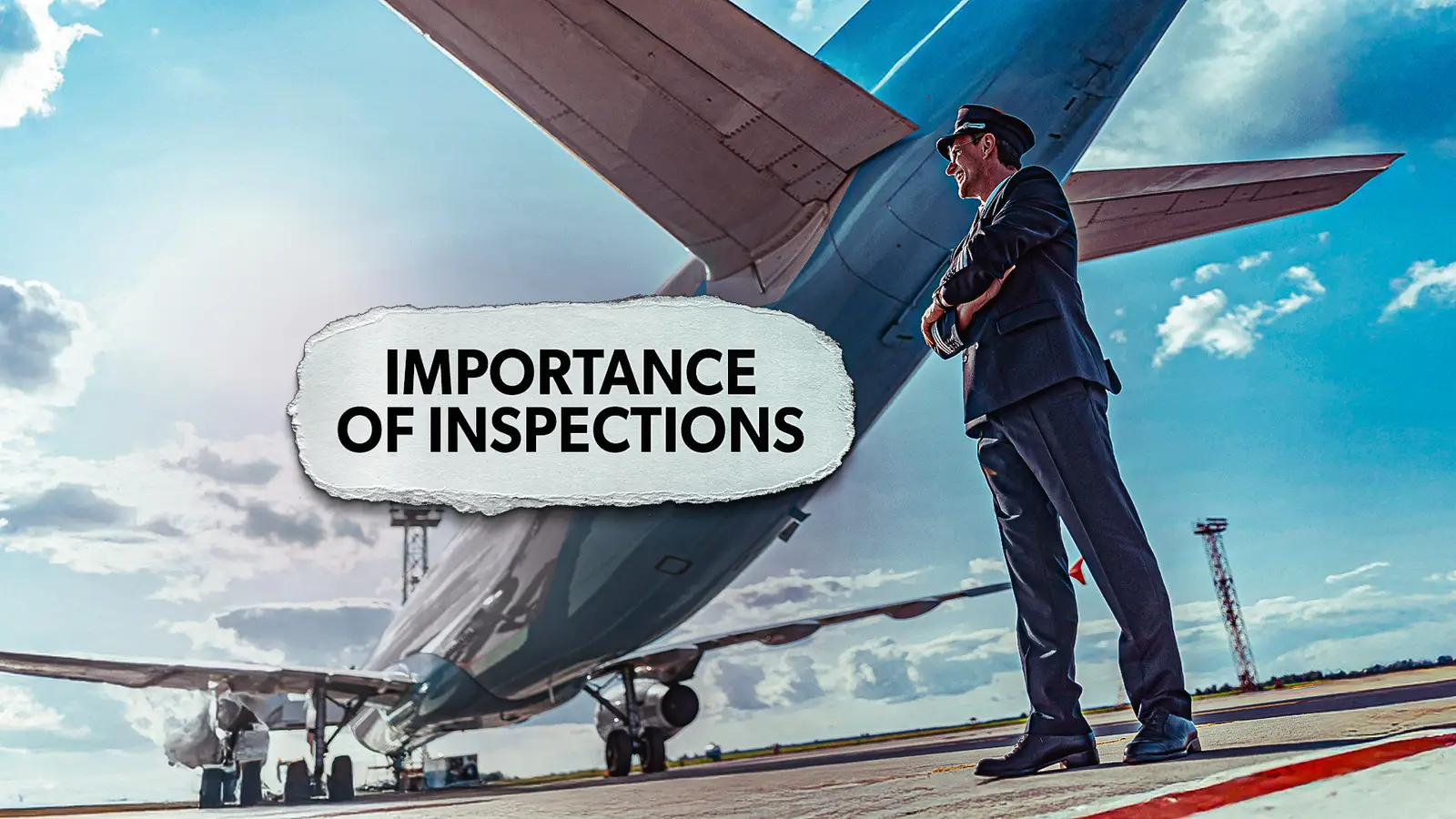
Sometimes, when passengers are at the gate, with a clear view of the plane they are waiting to board, they may notice the pilots walking around the plane. At this point in the preflight checks, a final inspection of the plane is conducted by the pilots, during which they do a full walk around the plane. This check is the final chance for operators to check for anything out of order before the plane takes off.
This inspection is called the preflight walk-around, and during this phase of preflight checks, pilots occasionally find items that have been missed by maintenance crews, which will certainly cause problems later on. This article provides a look at the preflight walk-around, including why it happens, what pilots look for, and what happens when something is found.
An Overview Of The Preflight Walk-Around
For pilots, safety is the absolute highest priority, and they generally won’t think twice about making a decision that results in hours of delay, rather than flying an unsafe plane. With this in mind, they take the physical condition of the aircraft extremely seriously. So, before each flight, in addition to their other tasks, the pilots conduct an exterior ‘walk-around’ of the aircraft, ensuring that they, as the pilot responsible for the plane and passengers onboard, are happy with its condition.
The general principle that a vehicle is the captain’s fundamental and legal responsibility, together with its occupants and cargo, is a common feature in transportation, whether it be shipping, trucking or flying. Even if the vehicle belongs to another party, the person assuming control of it for the duration of a journey is ultimately responsible for the vehicle and its safety. Therefore, the final decision of whether it is safe to use or not rests with the pilot in this case.
What Is The Walk-Around Process?
The walk-around is more than a cursory look, and this final check saves money on repairs, catches issues before they become bigger problems, and most importantly, saves lives. Issues found are often that a tire has become worn, a brake is near its limit, or a hydraulic actuator that moves a flight control is leaking. According to USA Today Travel, if an issue is discovered, a call to maintenance is made, and a licensed technician comes to inspect the component, determining if it is within limits or if maintenance must be immediately performed.
Often, such maintenance can be carried out quickly by technicians without moving the plane, and passengers would not be aware that it is occurring unless it results in a significant delay. For example, a worn-out tire can generally be changed at the gate, and usually within half an hour of being reported. Below, a typical walk-around for a commercial jetliner, the Boeing 787 Dreamliner, is outlined step-by-step, detailing which components are inspected, according to a guide from The Points Guy. Get ready for a long read, as it is pretty in-depth:
For pilots, checking these areas themselves provides an extra layer of security, lowering the likelihood that problems in these areas are present, but also gives the pilot extra peace of mind, which for newer pilots, will help them keep a cool head and perform to the best of their abilities.
What Do Pilots Report Finding During Inspections?
Commercial pilots shared their own experiences with the preflight walk-around on a Reddit thread, and some of their accounts reveal some other things that can be discovered during an inspection. Some pilots ended up being quite lucky, finding nothing more significant than bird feathers on the engine blades. However, the accounts do show the benefit of the procedure, especially when made in conjunction with those made by maintenance (MX) crews:
“IIRC I’ve found two things that needed to be corrected this year. One was a latch that was open on the engine, and the other were chips in the fan blades. A lot of the times I do feel useless because the airplanes I fly usually have MX personnel do walk arounds every flight. Though, when I found the fan blade chips. I had to get the mechanic after he was walking from the airplane after completing their walk around.”
In the pilots’ accounts, there were some finds that resulted in lengthy delays for passengers. However, the worst finds mentioned were not too sensational, often only resulting in delays and on-the-spot maintenance. There were few finds, such as the one below, which resulted in a plane being grounded, but even that was fixed a few hours later, which is a testament to the skill of the airport engineers:
“Found a missing screw on a panel around the pylon connection area of an engine (PW-A321n). The captain was in disbelief of the fact that I was able to see it. He thought it was nothing but I knew it would ground the aircraft. We had already started boarding so some passengers had to be deboarded and transported back to the terminal. It was fun. Mx personnel said a missing screw on a PW was a bitch to fix. At least 4 hours.”
However, having multiple teams work on maintaining and inspecting the same aircraft can occasionally have unintended consequences, and sometimes the separation between teams can lead to things falling through the cracks, as one pilot’s findings show below. That said, there would likely be many more incidents, were it not for multiple sets of eyes being cast over the plane before flight.
“I found a can opener in my engine inlet one cold dark morning on an A-320. Apparently MX had been using it to open the engine oil cans and were using the engine inlet as the work bench.”
“Damn. Good catch! Esp. on a cold, dark morning when it could have easily been missed. Would have been an expensive mistake. MX would have been canned (pun intended).”
How Useful Is The Walk-Around?
It certainly provides some reassurance to have pilots conduct an additional check, although most passenger jetliners are so large that doing so from the ground leaves something to be desired, as some important components cannot be inspected from a distance. While drones may allow visual checks to be performed from elevated angles, there really is no substitute for seeing something with human eyes, especially those of an experienced pilot.



